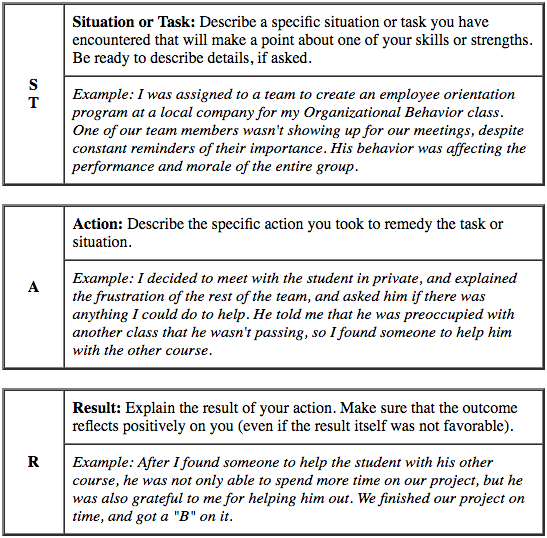Candidates
Interviewing Tips
- Dress for Success
- Positive Body Language
- Research the Company, Prepare Questions & Take Notes.
- Bring a clean copy of your resume & performance documentation.
- Close… Close… Close…
- Send a follow up thank you note.
Remember you never get a second chance to make a first impression. Interviewers will form an initial opinion of you within the first several minutes of the interview. Remember you want the interviewer to listen to what you have to say not be distracted by your attire.
Men: Dark suit, new white shirt, conservative tie, polished shoes.
Women: Dark conservative suit or pant suit (no bright colors such as red, yellow, or pink), conservative closed toe pump, conservative jewelry, make-up and hairstyle.
Shake the interviewer's hand firmly but not too strongly. Keep good eye contact at all times. Sit forward in your chair (it implies enthusiasm) and keep your hands calmly on your lap or on your arm rest. Smile.
Before you go on the interview visit the company's website and become familiar with their products. Write down 5-10 questions in advance that you have about the job responsibilities, expectations, territory size and company culture. Never discuss compensation information on the first interview.
Have your performance memos bound in a presentation folder that you can give to the person who is interviewing you. You may want to leave a copy for them to review
Remember YOU are the product being sold. An interviewer wants to see how you will react in front of a potential customer. He/She expects to be closed for the next step. Ask questions such as:
"What is the next step?"
"How does my background compare against the other candidates you’ve interviewed?"
"Do you have any questions or concerns about my abilities pertaining to this position?"
"I want to go to work for your company. What can I do to move to the next step in the process?"
Ask for the position or the next step at least two times, but no more than three.
Send an email that night, thanking the manager for his/her time, reiterating why you are a great fit for the position in terms of how you will be an immediate asset, and expressing your enthusiasm about moving to the next step. Keep it short and simple.
STAR Technique of Behavioral Interviewing
What is behavioral interviewing?
Behavioral interviewing is based on the premise that a person's recent, relevant past performance is the best predictor of future performance. Instead of asking how you would behave in a particular situation, a behavioral interviewer will ask how you did behave. You will be asked to provide a specific example of a past situation or task to demonstrate the way you performed in that specific situation or task.
How do I answer a behavioral question?
First of all, prepare for an interview by recalling recent situations that show favorable behaviors or actions involving work experience, leadership, teamwork, or customer service. Be sure that each story has a beginning, middle, and end. Be specific. Don't generalize about several events; give a detailed account of one event. Use the STAR technique described below to structure your answer. Expect the interviewer to question and probe; for example, What did you say? What were you thinking? What was your role?
The STAR technique can be utilized effectively to discuss a wide range of experiences, work situations, extracurricular activities, and leadership experiences.
Sample Questions:
"Tell me about a time when you were on a team, and one of the members wasn't carrying his or her weight."

"Tell me about a difficulty you have faced at work and what steps you took to overcome it."
